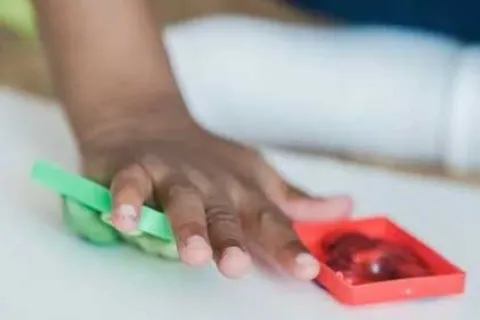Supporting sensory needs at school
School Community Tool Kit
Sensory integration provides a foundation for more complex learning and behavior. For most of us, effective sensory integration occurs automatically. For many people with autism, the process demands effort and attention with no guarantee of accuracy.
Sensory challenges can affect the student’s ability to take in information, respond to requests, participate in social situations, write, participate in sports, and maintain a calm and ready to work state. Research is still exploring the impact and factors associated with sensory challenges in autism. Some research, anecdotal observations and personal accounts from people with autism have provided important insights.
Either through internal imbalances, or in response to environmental sensations, the sensory and emotional regulation of a person with autism can become overwhelmed and result in anxiety and distress. Working to maintain a ‘modulated state’ is an effective strategy for maximizing his ability to learn, maintain focus and reduce reactive behavior. A trained occupational or physical therapist can provide help with sensory modulation (appropriate responses in relation to incoming sensations) and treatment for sensory dysfunction using evidence-based practices.
If a student is suspected of having sensory integration issues, trained personnel should evaluate his needs. The student’s school team can be trained to use fun, play-based activities that support the student’s needs and can be integrated throughout his program.
Supporting sensory needs in the classroom
- Be aware of possible sensory issues and alter the environment where possible (for example, minimizing exposure to loud noises, using low odor dry erase markers, selective seating arrangements) to reduce their impact on a child’s function.
- A sound sensitive student might find a gym teacher’s whistle assaulting and the echoes of a busy locker room disturbing - pairing the student with a teacher not inclined to use a whistle, and allowing him to dress when the locker room is empty, might greatly improve the student’s tolerance of, and interest in, Physical Education class.
- Some students find standing close to others difficult, so this would need to be addressed when deciding where to place a student in line when moving around the school or sitting in the cafeteria or classroom
- Students with autism may have difficulty looking at you and listening simultaneously (taking in information from auditory and visual modalities at the same time). From a social modeling aspect it is important to gain eye contact before speaking, but expect that a student might avert his eyes but still be listening.
- Highly decorated classrooms can be visually over-stimulating and distracting for some students.
- Some students may need to transition earlier than other students or may require a few minutes to unwind after walking in a noisy hallway.
- Typical classroom occasions such as singing the happy birthday song or participating in less structured, noisy activities such as lunch, assemblies and indoor PE classes can put a child with sensory issues into distress mode. It might be helpful to allow the student an “out” in these instances, such as being the person responsible for getting napkins during a birthday celebration (allowing the child to walk to the cafeteria while the rest of the class sings) or being a behind the scenes ‘production manager’ for a assemblies.
There is much that can be done to help alter the environment and provide supports that will make the world a less overwhelming place for a student with autism.
Read the full list and learn more about supporting students with autism in the Autism Speaks School Community Tool Kit.








